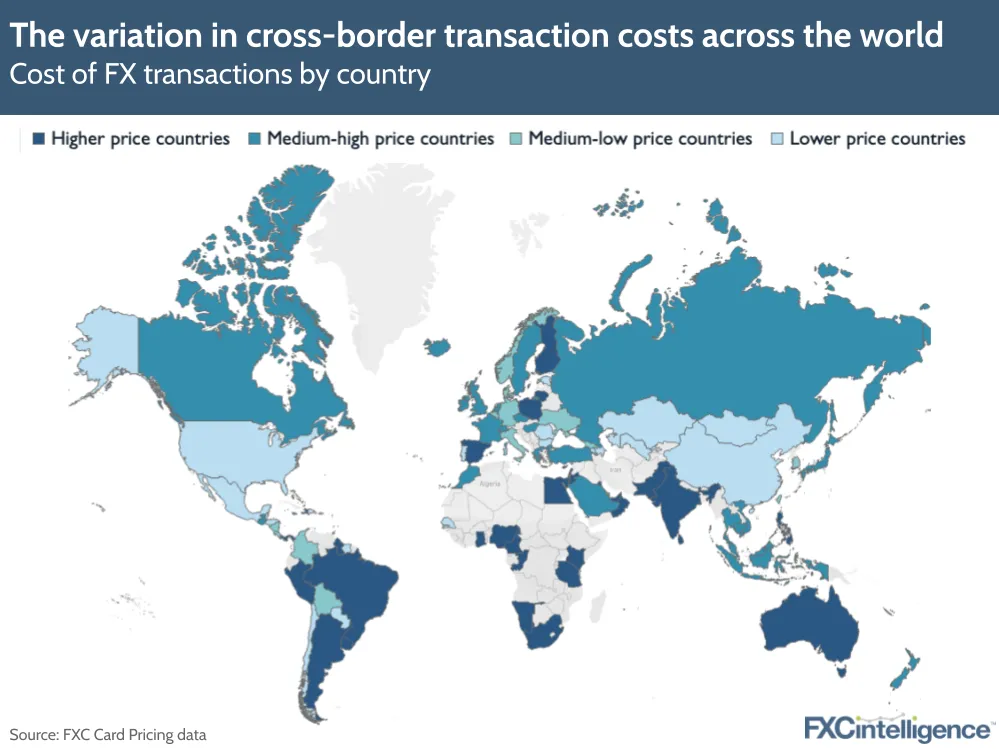Last week, we looked at how card issuers’ T&Cs alone are not enough to explain the cost of a cross-border transactions as there can be several other factors driving the real cost of a transaction. This week we take a deep dive into how the cost of these transactions differ around the world, as differences can be significant even within the same region.

The cost of a cross-border transactions seems to have little correlation with regions and plenty of variance within a region. The exception to this is Africa, where almost all countries covered are in the medium and larger price bands.
How high prices are depends on a large number of factors. One of them are the exchange rates and the margins applied by the card networks like Visa and Mastercard. These margins vary widely across currencies and are subject to significant fluctuations in time. Hidden costs that are not reported in the official issuers’ T&Cs can be another driving factor, as we saw last week.
The cost of a cross-border card transaction can eclipse 10% of the transaction amount in certain countries and for certain card programs. Even in the era of cross-border ecommerce, the lack of transparency and the uncertainty over the final cost of the payment can prevent customers from shopping cross-border or cause unhappiness when these costs are uncovered. At the same time, this challenge provides significant room for merchants to capture margins on cross-border transactions at checkout.
Additional research undertaken by Andrej Predojevic.


